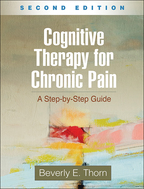Cognitive Therapy for Chronic Pain
Second Edition
A Step-by-Step Guide
Beverly E. Thorn
1. Why Consider Cognitions When Treating Chronic Pain?
2. Conceptual/Organizational Model and Treatment Rationale: Cognitive Therapy for Chronic Pain
3. The Research Foundation for Cognitive Treatment of Pain
4. Clinical Assessment of Pain from a Biopsychosocial Perspective
II. A Cognitive Treatment Program for Chronic Pain
Treatment Module 1. The Brain in Pain: Rationale for Cognitive Therapy
Treatment Module 2. The Stress–Judging–Pain Connection
Treatment Module 3. Identifying Automatic Thoughts
Treatment Module 4. Examining Our Thoughts and Creating New Ones
Treatment Module 5. Muscle Relaxation and Coping Self-Statements
Treatment Module 6. Deeper Beliefs
Treatment Module 7. Observing and Letting Go
Treatment Module 8. Writing about Strong Emotions: Another Way of Acknowledging and Letting Go
Treatment Module 9. Assertiveness: A Great Way to Communicate
Treatment Module 10. Putting It All Together
Appendices
Appendix A. Brief Pain Inventory—Short Form (BPI-SF)
Appendix B. P4 Suicidality Screener (P4)
Appendix C. Pain Catastrophizing Scale (PCS)
Appendix D. Tampa Scale for Kinesiophobia–11 (TSK-11)
Appendix E. Pain Self-Efficacy Questionnaire (PSEQ)
Appendix F. Patient Global Impression of Change Scale
Audio Downloads
1. Diaphragmatic (Belly) Breathing
2. Passive Muscle Relaxation
3. Mindfulness Relaxation



